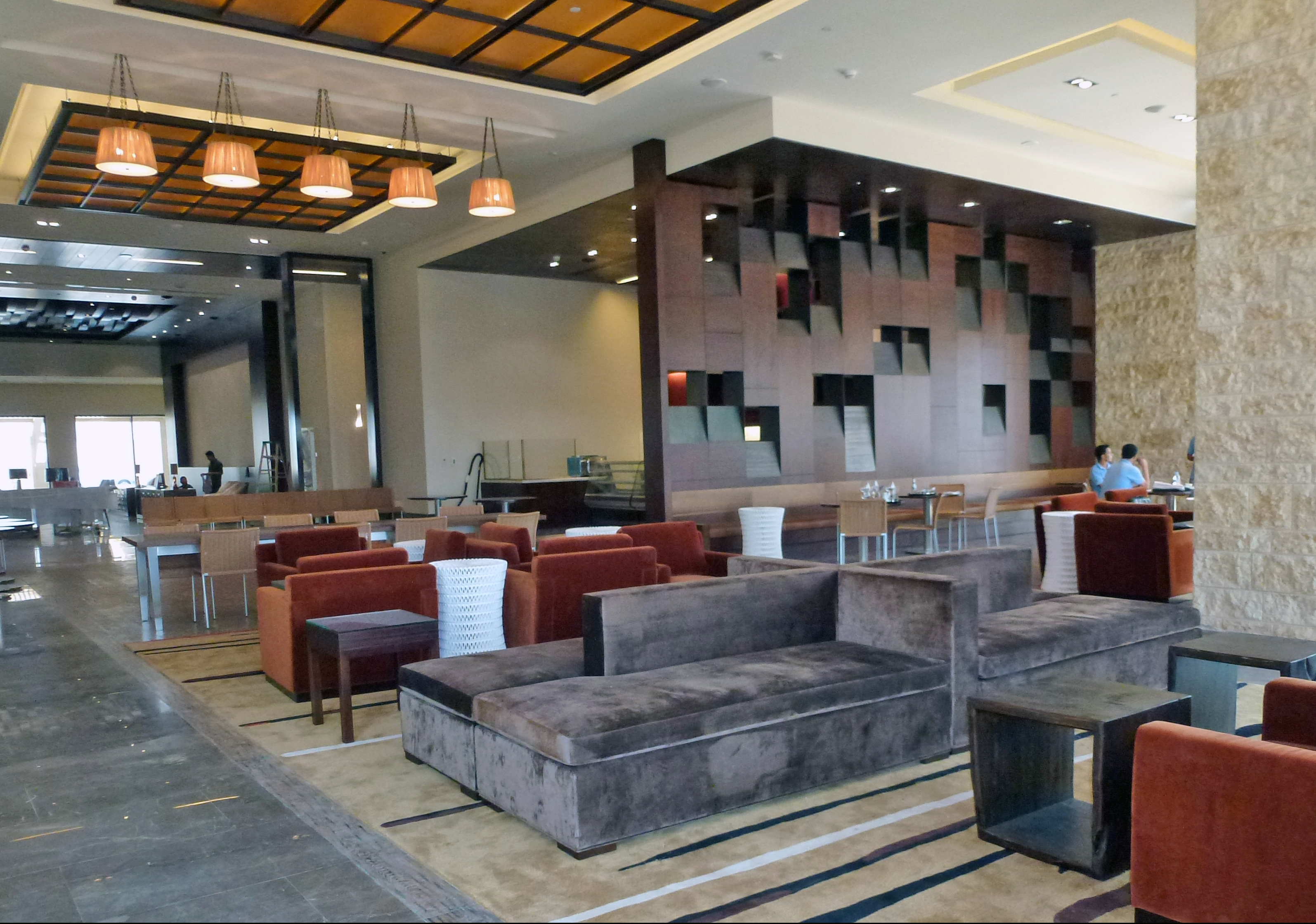GREC Architects announced the November 1st 2011 opening of the Westin Abu Dhabi Golf Resort and Spa in Abu Dhabi, the capital of the United Arab Emirates. The luxury golf resort, owned by TDIC, (Tourism Development Investment Company), and operated by Starwood Hotels and Resorts, is an oasis for wellness and rejuvenation and is ideally situated next to the renowned Abu Dhabi Golf Course, home to the PGA European Tour Abu Dhabi Golf Championship.
The hotel was designed by GREC and an international team of consultants to enhance the offerings of the Abu Dhabi Golf Club without imposing upon the dramatic landscapes of the elite golf course. Chiseled stone exteriors and minimalist, contemporary interiors forged from rusticated gold limestone, petrified and reclaimed wood and warm hued accents give a simple yet rich feeling that integrates the club into the desert surroundings. To contend with the extreme desert climate, outdoor spaces are veiled in crafted architectural screens, accompanied by modern fountains, swimming pools, and a lush, vegetated leisure area. Hotel common areas have soaring ceilings that lead the eye up to the uniquely designed, winged rooftops that are the signature of the resort.
Greg Randall, the managing partner for the project explained “we wanted the hotel to serve as a sophisticated backdrop for the breathtaking landscape. The European PGA Championship Tournament is played here every year, so it was important that the design represents Abu Dhabi’s forward thinking as a modern city and its expanding presence on the world stage.” BD+C
Related Stories
Cultural Facilities | Feb 25, 2015
Edmonton considering 'freezeway' to embrace winter
If the new Edmonton Freezeway is constructed, residents will have an 11-km course that winds through the city and allows them to skate to work, school, and other city activities.
Building Team | Feb 24, 2015
Call for entries: 2015 Giants 300 survey
The annual Giants 300 Report ranks the top AEC firms in commercial construction, by revenue.
Industrial Facilities | Feb 24, 2015
Starchitecture meets agriculture: OMA unveils design for Kentucky community farming facility
The $460 million Food Port project will define a new model for the relationship between consumer and producer.
University Buildings | Feb 23, 2015
Future-proofing educational institutions: 5 trends to consider
In response to rapidly changing conditions in K-12 and higher education, institutions and school districts should consider these five trends to ensure a productive, educated future.
Office Buildings | Feb 23, 2015
The importance of quiet and the consequences of distraction
Recent work style studies show that the average knowledge worker spends 25-35% of their time doing heads-down focused work. Once thrown off track, it can take some 23 minutes for a worker to return to the original task.
Modular Building | Feb 23, 2015
Edge construction: The future of modular
Can innovative project delivery methods, namely modular construction, bring down costs and offer a solution for housing in urban markets? FXFOWLE’s David Wallance discusses the possibilities for modular.
| Feb 23, 2015
6 trends changing the way city dwellers live
Across the cultural grid, from food to retail to transportation, America's urban areas are already undergoing a major metamorphosis. Here are the six major trends shaping our cities, from Fast Company.
Green | Feb 23, 2015
State of the green union, and the next big shift in sustainability
The history of the green movement offers cues that we are on the precipice of another significant shift in the green union.
| Feb 23, 2015
Where are the iconic green buildings?
What does a green building look like? How would you know one if you saw one? Maybe a trivial question to some, but of great interest to architects, designers, and other members of the Building Team as the rapid evolution of sustainable buildings continues apace.
Sports and Recreational Facilities | Feb 21, 2015
Pumped-up recreation centers help build body, mind, and spirit
Adopting facility layouts from Asian and European models, today’s sports and recreational buildings are becoming social hubs that accommodate a variety of community needs.















